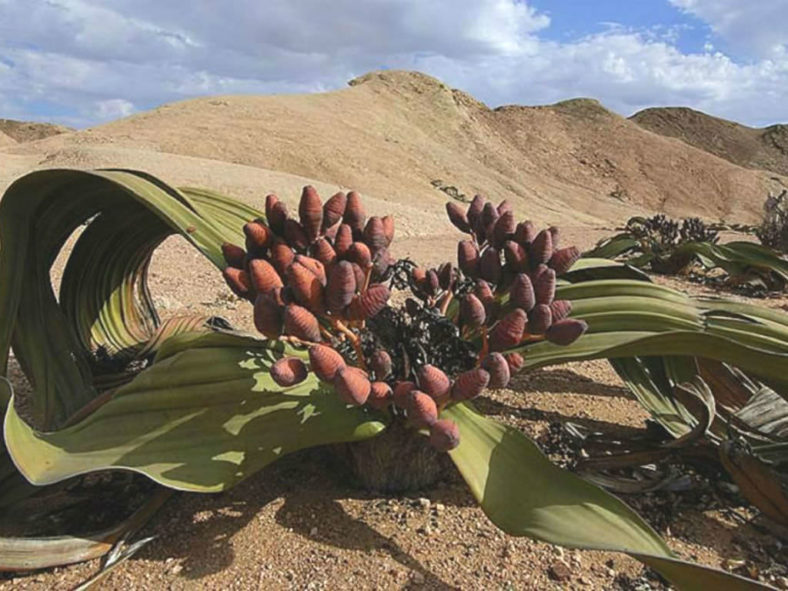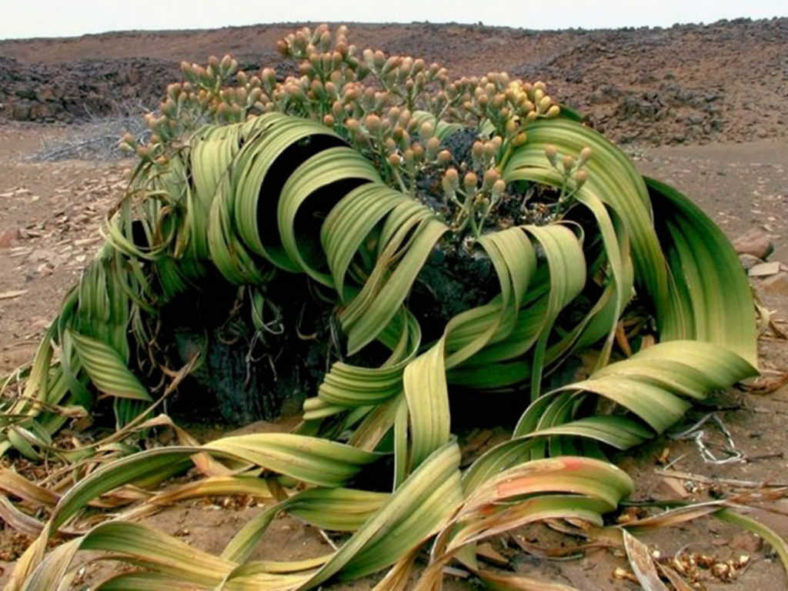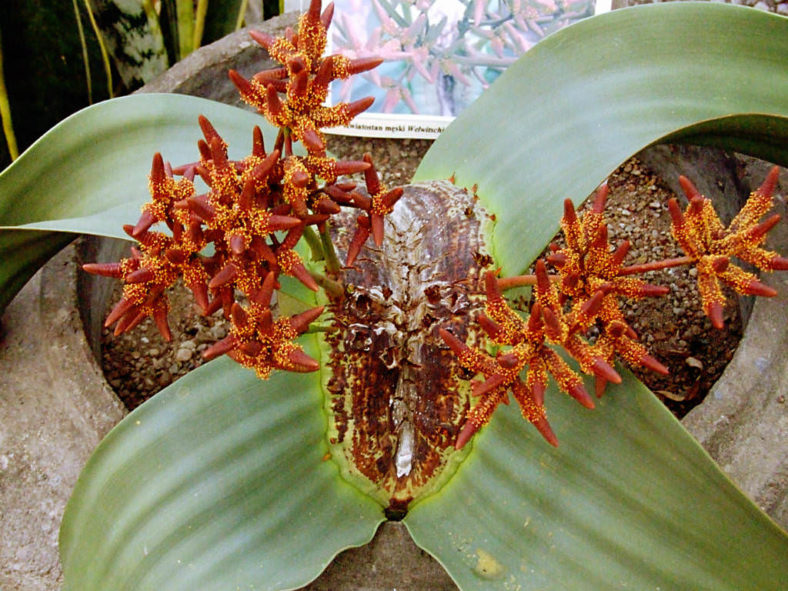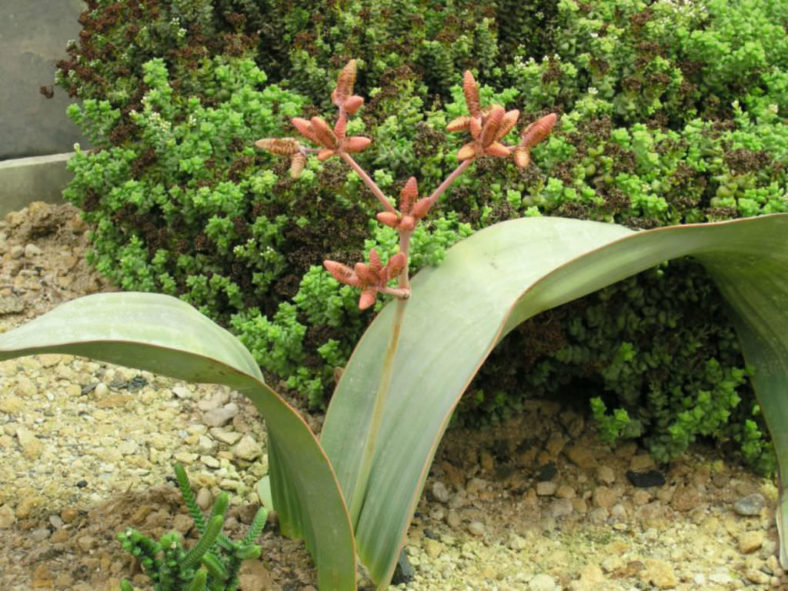Welwitschia mirabilis is the sole member of the family Welwitschiaceae. It is named after Friedrich Welwitsch (1806-1872), an Austrian naturalist who explored Africa in the 1800s. Although this plant is not a true succulent, it captures the interest of succulent growers and enthusiasts. It is considered caudiciform, yet it is not often included in accounts of these plants, as it belongs to the "wrong" family.
Scientific Name
Welwitschia mirabilis Hook. f.
Common Names
Tree Tumbo, Tumboa, Welwitschia
Synonyms
Tumboa bainesii, Welwitschia bainesii, Tumboa strobilifera
Scientific Classification
Family: Welwitschiaceae
Genus: Welwitschia
Etymology
The specific epithet "mirabilis" (pronounced "mih-RAB-ih-liss") means "wonderful, marvelous, astonishing, extraordinary, remarkable, amazing; glorious; miraculous" and refers to the fact that this plant is truly one of a kind, making it one of the few things on Earth that can claim such a distinction.
Origin
Welwitschia mirabilis is endemic to the Namib Desert, located in both Namibia and Angola.
Description
Welwitschia mirabilis is a dioecious plant with a short stem and only two opposite leaves that emerge from marginal grooves on the crown. Each leaf splits into numerous parallel sections and twists, giving the plant a unique appearance. This plant is often described as wonderful, weird, strange, bizarre, fascinating, and unique. The leaves continue to grow throughout the plant's entire life. They are broad, strap-shaped, and may reach a length of 13 feet (4 m) or more. The stem is unbranched, woody, and can reach a height of up to 20 inches (50 cm).
This plant is a dioecious gymnosperm, producing cones, not flowers, on separate male and female specimens. The male cones are small, oblong, salmon-coloured, while the female cones are blue-green, larger, and more tapering.

How to Grow and Care for Welwitschia mirabilis
Hardiness
USDA hardiness zone 9b to 11b: from 25°F (-3.9°C) to 50°F (10°C).
Welwitschia mirabilis can be grown easily in cooler climates as a pot plant on windowsills and verandas. Once established, the plant will grow steadily and is relatively disease-free. The most crucial stage is during its first eight months after germination, when it is particularly susceptible to fungal attack. Additionally, since it is not a true succulent, it should not be treated as such. It is dependent on additional water from its roots, and if grown in a pot, care should be taken that the soil does not dry out completely.
When growing Welwitschia, several key factors must be considered: the long taproot, its reliance on supplemental moisture, and the type of soil used. Plants from arid regions are often lost to a fungal infection caused by soil with high organic content. Therefore, it is safer to use a sandy mixture, water the mix more frequently, and provide supplementary feedings. Sterilized soil is also recommended. Older plants tend to accumulate organic debris around themselves, which enriches the soil and acts as a mulch, helping to retain water in the upper layers of the sand for longer.
Sow the seeds during the warmer months, spring or summer. In the plant's native habitat, the seeds are dispersed in spring but must wait for the rain to fall before germinating. It is best to sow seeds into a large, deep container, at least 12 inches (30 cm) in diameter, preferably more, or into an open bed where the plant is intended to remain, as the taproot grows quickly in the initial stages.
Links
- Back to genus Welwitschia
- Succupedia: Browse succulents by Scientific Name, Common Name, Genus, Family, USDA Hardiness Zone, Origin, or cacti by Genus
Photo Gallery
Click on a photo to see a larger version.


